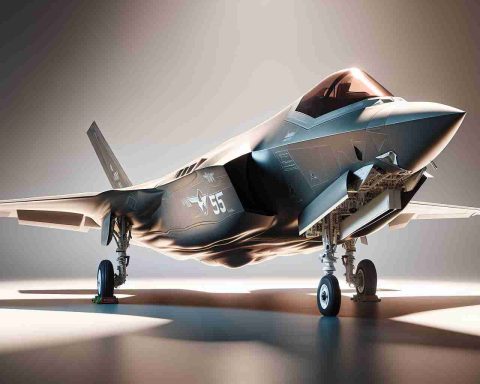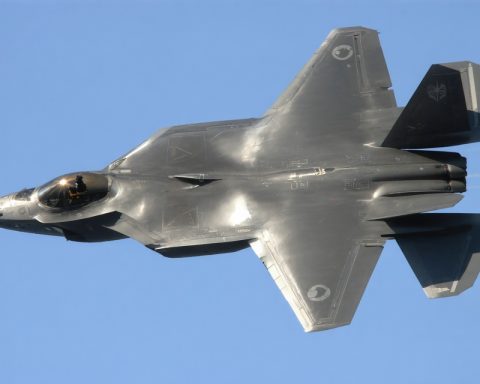School Art Causes a Stir in Russia
A recently opened school in Pechenga found itself at the center of an unexpected controversy when newly painted silhouettes of airplanes on its walls caught public attention. Initially intended as a harmless decoration, these silhouettes became a hot topic after observers questioned their resemblance to F-16 Fighting Falcons.
The artistic intentions, while innocent, were misinterpreted, prompting the school administration to take swift action. To mitigate the confusion, they decided to alter the design to unmistakably resemble the Su-57, a fighter jet recognized more fittingly within the region.
Social Media Strikes Again
Originally, the school had intended the images to depict the Su-27, another aircraft. However, social media users scrutinized the image features closely, leading to allegations that the planes were not Russian in origin, but rather American.
An official response was provided by the regional Ministry of Education, which clarified that there were never any depictions of American jets on the school walls. The school had coordinated with local military personnel to ensure the artwork was appropriate.
Tensions among netizens were stirred after a keen-eyed observer showcased a comparison between the Su-27 and the American F-16 Fighting Falcon, escalating public debate. This incident underscores the impact of social media on perceptions and highlights the sensitivity around national symbols.
Why School Art Can Become a Flashpoint in International Controversies
Art, which often serves as a vehicle for expression and creativity, can surprisingly become a point of international contention, as illustrated by the recent events in Pechenga, Russia. What started as an innocent artistic endeavor in a newly opened school swiftly morphed into a controversial issue under the microscope of social media.
The Role of Social Media in Shaping Perceptions
The incident in Pechenga underscores the powerful role of social media in shaping public perceptions. Observers on these platforms dissected the painted silhouettes of airplanes on the school’s walls, leading to speculation and debate about their origins. This scrutiny was so intense that the intended depiction of a Russian Su-27 was mistaken for the American F-16 Fighting Falcon, igniting controversy and prompting official clarifications.
How Artistic Intentions Were Misinterpreted
The Internet’s magnifying glass can transform art into a potential flashpoint when national symbols are involved. The regional Ministry of Education had to step into this social media storm to clarify that there were no intentional representations of non-Russian aircraft. The move to modify the artwork to undeniably represent the Russian Su-57 further illustrates how delicate such situations can be.
Insights into the Sensitivity of National Symbols
The Pechenga school incident is a case study in the sensitivity surrounding national symbols and the ease with which artistic intentions can be misconstrued. Art that features aviation is particularly susceptible due to the significance and recognition of military aircraft as national icons. In an era where images can rapidly spread beyond borders, understanding and navigating this sensitivity is crucial.
Future Trends: Art and Education in an Online World
Looking at this incident through a broader lens, educational institutions may need to consider how local artistic choices are perceived globally. Future-facing institutions might implement processes that involve collaboration with cultural and military experts to align artworks with community values, particularly when national symbols are depicted. Additionally, educational institutions might invest in digital literacy programs that enable students and faculty to gauge and manage potential public reactions to artistic content shared online.
Conclusion
As art continues to intersect with national identity and social media becomes further entrenched as a global communication platform, educational institutions need to navigate their artistic expressions thoughtfully. The Pechenga school controversy demonstrates that what happens in a small town can quickly become a global conversation, reinforcing the need for a strategic approach to public art in educational settings.
For more on cultural sensitivity and the role of educational institutions in an interconnected world, visit the UNESCO website.












